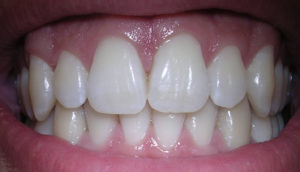 Two articles about the link between Alzheimer's disease (AD) and microbes this past week: a study linking periodontal disease and Alzheimer's, and the other a journal editorial (written by an international team of 31 researchers) suggesting that we need to more closely look at the role of microbes in Alzheimer's disease, especially herpes virus, chlamydia and spirochaete bacteria.
Two articles about the link between Alzheimer's disease (AD) and microbes this past week: a study linking periodontal disease and Alzheimer's, and the other a journal editorial (written by an international team of 31 researchers) suggesting that we need to more closely look at the role of microbes in Alzheimer's disease, especially herpes virus, chlamydia and spirochaete bacteria.
This team is suggesting an "infectious cause" for Alzheimer's, an example being the reactivation of herpes simplex virus type 1 (HSV1) in the person. The researchers state that "regarding HSV1, about 100 publications by many groups indicate directly or indirectly that this virus is a major factor in the disease". The team also mentions the possibility of fungi infection in some cases (see my November 6, 2015 post about a study finding fungal involvement). Both articles mention that treatment of the diseases with some form of antimicrobials or antivirals could possibly treat Alzheimer's disease, and that trails now need to be done.
From Science Daily: Link between gum disease and cognitive decline in Alzheimer’s
A new study has found a link between gum disease and greater rates of cognitive decline in people with early stages of Alzheimer's Disease. Periodontitis or gum disease is common in older people and may become more common in Alzheimer's disease because of a reduced ability to take care of oral hygiene as the disease progresses. Higher levels of antibodies to periodontal bacteria are associated with an increase in levels of inflammatory molecules elsewhere in the body, which in turn has been linked to greater rates of cognitive decline in Alzheimer's disease in previous studies.
The presence of gum disease at baseline was associated with a six-fold increase in the rate of cognitive decline in participants over the six-month follow-up period of the study. Periodontitis at baseline was also associated with a relative increase in the pro-inflammatory state over the six-month follow-up period. The authors conclude that gum disease is associated with an increase in cognitive decline in Alzheimer's Disease, possibly via mechanisms linked to the body's inflammatory response.....However, growing evidence from a number of studies links the body's inflammatory response to increased rates of cognitive decline, suggesting that it would be worth exploring whether the treatment of gum disease might also benefit the treatment of dementia and Alzheimer's Disease.
From Journal of Alzheimer's Disease: Microbes and Alzheimer’s Disease
We are researchers and clinicians working on Alzheimer’s disease (AD) or related topics, and we write to express our concern that one particular aspect of the disease has been neglected, even though treatment based on it might slow or arrest AD progression. We refer to the many studies, mainly on humans, implicating specific microbes in the elderly brain, notably herpes simplex virus type 1 (HSV1), Chlamydia pneumoniae, and several types of spirochaete, in the etiology of AD [1–4]. Fungal infection of AD brain [5, 6] has also been described, as well as abnormal microbiota in AD patient blood [7]. The first observations of HSV1 in AD brain were reported almost three decades ago [8]. The ever-increasing number of these studies (now about 100 on HSV1 alone) warrants re-evaluation of the infection and AD concept.
AD is associated with neuronal loss and progressive synaptic dysfunction, accompanied by the deposition of amyloid-β (Aβ) peptide, a cleavage product of the amyloid-β protein precursor (AβPP), and abnormal forms of tau protein, markers that have been used as diagnostic criteria for the disease [9, 10]. These constitute the hallmarks of AD, but whether they are causes of AD or consequences is unknown. We suggest that these are indicators of an infectious etiology. In the case of AD, it is often not realized that microbes can cause chronic as well as acute diseases; that some microbes can remain latent in the body with the potential for reactivation, the effects of which might occur years after initial infection; and that people can be infected but not necessarily affected, such that ‘controls’, even if infected, are asymptomatic [2].
Regarding HSV1, about 100 publications by many groups indicate directly or indirectly that this virus is a major factor in the disease....The only opposing reports, two not detecting HSV1 DNA in elderly brains and another not finding an HSV1–APOE association, were published over a decade ago [76–78]. However, despite all the supportive evidence, the topic is often dismissed as ‘controversial’. One recalls the widespread opposition initially to data showing that viruses cause some types of cancer, and that a bacterium causes stomach ulcers.
In summary, we propose that infectious agents, including HSV1, Chlamydia pneumonia, and spirochetes, reach the CNS and remain there in latent form. These agents can undergo reactivation in the brain during aging, as the immune system declines, and during different types of stress (which similarly reactivate HSV1 in the periphery). The consequent neuronal damage— caused by direct viral action and by virus-induced inflammation— occurs recurrently, leading to (or acting as a cofactor for) progressive synaptic dysfunction, neuronal loss, and ultimately AD.
AD causes great emotional and physical harm to sufferers and their carers, as well as having enormously damaging economic consequences. Given the failure of the 413 trials of other types of therapy for AD carried out in the period 2002–2012 [79], antiviral/antimicrobial treatment of AD patients, notably those who are APOE ɛ 4 carriers, could rectify the ‘no drug works’ impasse. We propose that further research on the role of infectious agents in AD causation, including prospective trials of antimicrobial therapy, is now justified.
 The bacteria Fusobacterium nucleatum is prevalent in periodontal disease (gum disease), but also in some chronic diseases and cancers, such as colorectal cancer. The bacteria F. nucleatum is normally found in the mouth (oral) microbiome, and its numbers increase as periodontal disease inflammation increases.
The bacteria Fusobacterium nucleatum is prevalent in periodontal disease (gum disease), but also in some chronic diseases and cancers, such as colorectal cancer. The bacteria F. nucleatum is normally found in the mouth (oral) microbiome, and its numbers increase as periodontal disease inflammation increases.
 A
A  Two articles about the link between Alzheimer's disease (AD) and microbes this past week: a study linking periodontal disease and Alzheimer's, and the other a journal editorial (written by an international team of 31 researchers) suggesting that we need to more closely look at the role of microbes in Alzheimer's disease, especially herpes virus, chlamydia and spirochaete bacteria.
Two articles about the link between Alzheimer's disease (AD) and microbes this past week: a study linking periodontal disease and Alzheimer's, and the other a journal editorial (written by an international team of 31 researchers) suggesting that we need to more closely look at the role of microbes in Alzheimer's disease, especially herpes virus, chlamydia and spirochaete bacteria. Research found that postmenopausal women with periodontal disease (gum disease) were more likely to develop breast cancer than women who did not have the chronic inflammatory disease. And it's a bigger risk among those who currently smoke or quit smoking within the last 20 years. The interesting part is the fact that periodontal disease is a bacterial disease and that it results in inflammation. An earlier
Research found that postmenopausal women with periodontal disease (gum disease) were more likely to develop breast cancer than women who did not have the chronic inflammatory disease. And it's a bigger risk among those who currently smoke or quit smoking within the last 20 years. The interesting part is the fact that periodontal disease is a bacterial disease and that it results in inflammation. An earlier